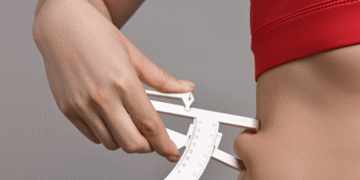If you’re sitting behind a desk for a long time, it is very probable that you may have noticed that your shoulders are getting round, the back is hurting or you have been dragging your head. Nobody is asking you to be an exception. Millions of others who are in the United States are facing the issue of bad posture due to sitting too much. The good thing is that you can solve this problem at your home by doing some specific posture exercises.
No need to go to the gym or use any accessories with these movements. Just 10–15 minutes every day will remove the negative effects of sitting, develop the core, and, as a result, you will not feel your spine killing you anymore.
Why Posture Exercises Matter Now More Than Ever

Sitting for too long causes your lower back and core muscles to weaken, tightens your hip flexors and chest, and places the body in an incorrect position. As a result, the typical position is formed at the desk, with your head forward, your shoulders hunched, and your lower back rounded. In the long run, such a posture can be the cause of headaches, constant fatigue, and even pain that comes back from time to time.
Posture exercises are the best solutions to make the body straight again by awakening those muscles that have been responsible for maintaining it upright and balanced. They have the ability to increase the range of motion, make the person stronger, and also form a barrier against health troubles that are caused by the lack of activity.
6 Posture Exercises You Can Do at Home or Work
Each of these posture exercises addresses a specific area of your body which is the most stressed when sitting down. Get through them once each and gradually increase them to two or three over time.
1. Wall Angels
Simple as it is the wall angels will work your chest and shoulder muscles. You only need to lean on a wall and raise your hands up and down in a move that imitates a snow-angel. Elbow and wrist joints have to be in touch with the surface all the time. By performing this exercise you give a signal to your back muscles that they need to hold your body correctly thus achieving the effect of your body being straightened up.
2. Glute Bridge
Your glutes are one of the most important muscle groups for posture. When they are not operating well, your lower back takes over and the result is a very painful back. A glute bridge is done by lying on your back with your knees bent and feet flat. Elevate your hips by pressing into your heels and on top of the move, contract your gluteal muscles.
3. Bird Dog
This exercise is good for your core stability, which in turn is good for your body balance and the right postural muscle alignment. Start in the tabletop position, placed your right hand forward in front of you and your left leg back. Hold there for a while, then get back to the starting position. Switch to the opposite side. Bird dog not only makes your core strong but also your lower back is stretched and you are able to stay upright the whole day long.
4. Prone Arm Raises
On your stomach, keep your feet flat and arms at your side, palms facing downwards. Work your back and shoulders muscles by lifting your chest and arms off the floor while you are pressing your shoulder blades together. This exercise spot-targets your mid-back the very place that weakens with regular slouching.
5. Standing Cat-Cow
To perform the next one, you don’t have to lie on the ground. Hold your hands on your thighs, and arch the spine on the inhale, pulling the heart and lungs up. Afterwards, round the back and tuck your chin in (cat). This is a basic stretch that keeps your spine unlock and eases stress on the lower back from sitting for hours.
6. Desk Squats
The chair at your desk can be helpful. Stand in front of it, and lower your body like you want to sit then raise. This simple movement where the whole body is working with- and against-gravity helps tone up your legs, core, and hip, and it improves your posture by not allowing inertia to set in while still at work.
How to Make It a Habit
It’s the regular and continuous execution of the activity that leads to the perfect posture not just a one-time position of the body. Begin by doing these exercises onto your body every other day. Gradually, aim to do them daily and/or take short movement breaks at work. You may not realize that just standing up for a minute every hour, your workday would be much healthier.
Mate these posture exercises with an appropriately arranged working area: put your monitor at the level of your eyes, make sure both of your feet are touching the floor and use a chair that is not only comfortable for you but also helps you maintain a good sitting posture.















